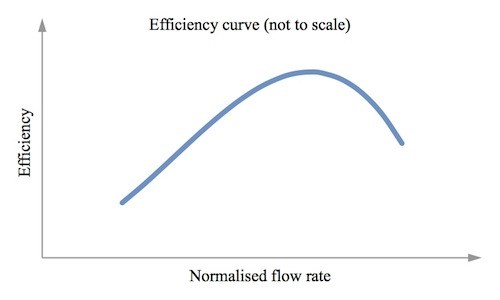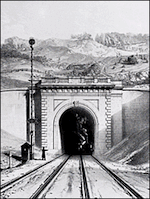Box University's School of Engineering has been approached by the Parish Council to ease the village's increasing demand for energy. A hydroelectric solution is being considered. Box is rich with natural springs and streams, but a 'Run-of-River' hydroelectric scheme has been ruled out; instead, a dam installation is under investigation.
The published coordinates indicate the proposed site of the reservoir; a satellite view reveals why the location is an ideal candidate. However, it should be noted that the practical stage of the examination is not at these coordinates – the Vice Chancellor at that dreaming spire would not be amused.
A submerged reaction turbine is being proposed.
Reservoir dimensions: 12m x 7m x 2m (this is currently only a proof of concept; it will have to be enlarged in due course).
The hydraulic head (vertical distance between water inlet and outlet) is 18m (water will exit into the By Brook below the Recreation Ground).
The mean temperature of the water may be assumed to be 10°C.
Standard Earth gravity has been confirmed at the site (a select few students may know there are slight variations elsewhere in the village).
Efficiency
Hydropower turbines are designed to operate near their maximum efficiency at a nominal flow rate Qo but each installation is subject to unique variations. Some tests have been performed on Box's proposed system across a range of flow rates and the efficiency data has been modelled from the results as follows:
η = αq3 + βq2 + γq + δ
where:
η represents efficiency
q = Q/Qo the normalised flow rate (i.e. q would be unity operating at an actual flow rate Q that matches the nominal design flow rate Qo)
α = −3.609078
β = 5.746863
γ = −1.804407
δ = 0.416623
The model is only valid for test data gathered for 0.4 ≤ q ≤ 1.2, but this is considered adequate to cover the typical operating range. It will be observed that the model gives rise to an efficiency curve of the shape below, in the area of interest.

From the mathematical model we can calculate the maximum expected efficiency ηmax and, given that the nominal design flow rate for our system Qo equals 0.86207m3/s, we can also calculate the optimum actual flow rate Q to yield this maximum efficiency. Denote this optimum flow rate as Qeff (again in m3/s).
Therefore we may calculate the most efficient expected power from the proposed system, given some or all of the preceding information and calculations. Denote this power as Peff and express it in kW to 4 significant figures.
If Peff is represented as abcd (ignoring any decimal point, if relevant), use these values to calculate a pair of coordinates that will be used for the practical part of the examination.
N51 x W002 y
where:
1000x = 24600 + 31a + 5c + 312d
1000y = 12900 − 2a − 29b + 302c
(Note that the two equations above are expressed using the conventional mathematical format for multiplication, so any engineering students taking the optional geocaching module should not assume that adjacent letters or digits imply any sort of the concatenation often used with geocaching. The northing/westing information does of course involve the straightforward substitution you would expect.)
Please submit your coordinate calculations to the examining board via the School of Engineering's e-learning portal below. Assuming you have the correct solution, you will receive details of the practical stage of the qualification.
| University of Box: Engineering Portal |
| Scientia vincere tenebras |
 |
| Click to submit your solution |
When I give the indication, you may turn over your examination paper and begin. Remember to write your name at the top of each sheet used. Calculators are permitted. No conferring. Your time begins now.
Optional extra assignment (mental exercise only, added 20/10/13)
Using the efficiency model above, it is possible to calculate the power as a function of q, in the given range of the model. From this, we may calculate the maximum expected power from the system Pmax. As discussed at one point in the Notes below, Pmax does not necessarily occur at ηmax. Purely as a mental exercise (it has no bearing on the core Box Scholar of Engineering qualification), you may like to investigate this further by following the instructions here and using the supplementary checking portal here.